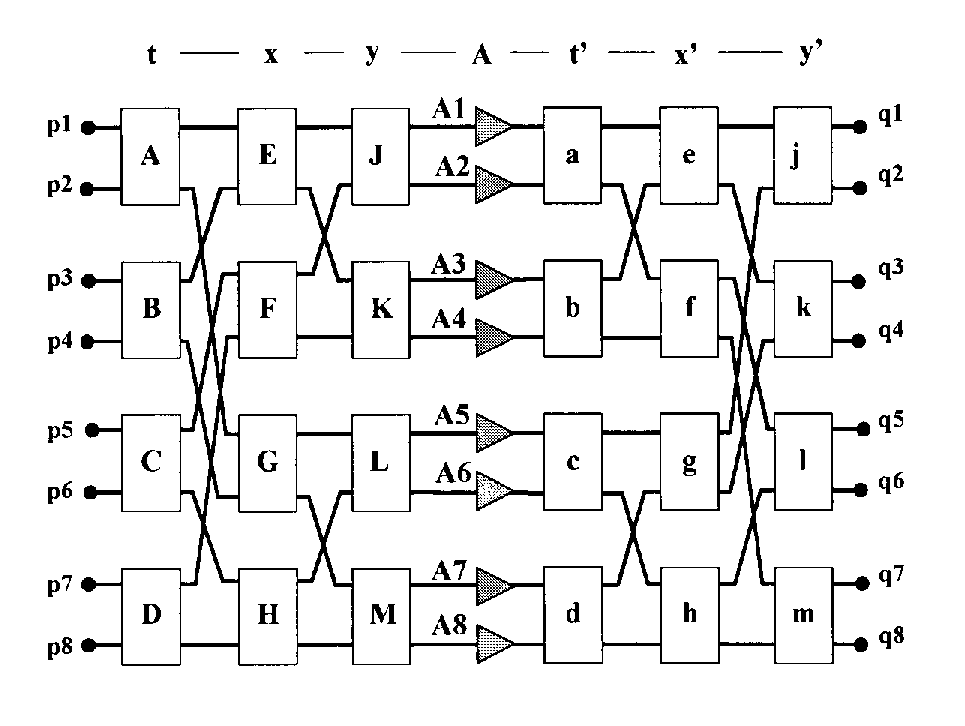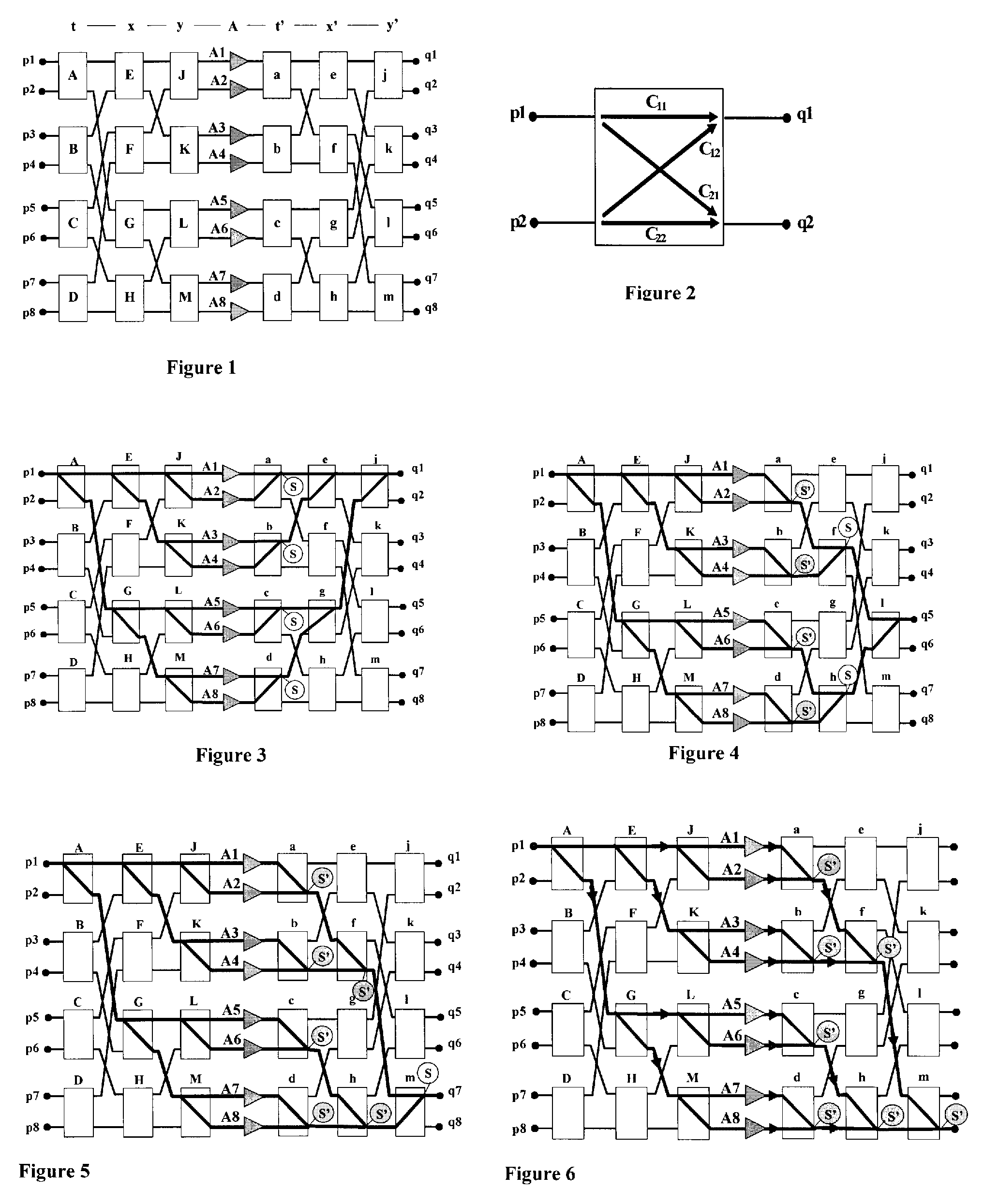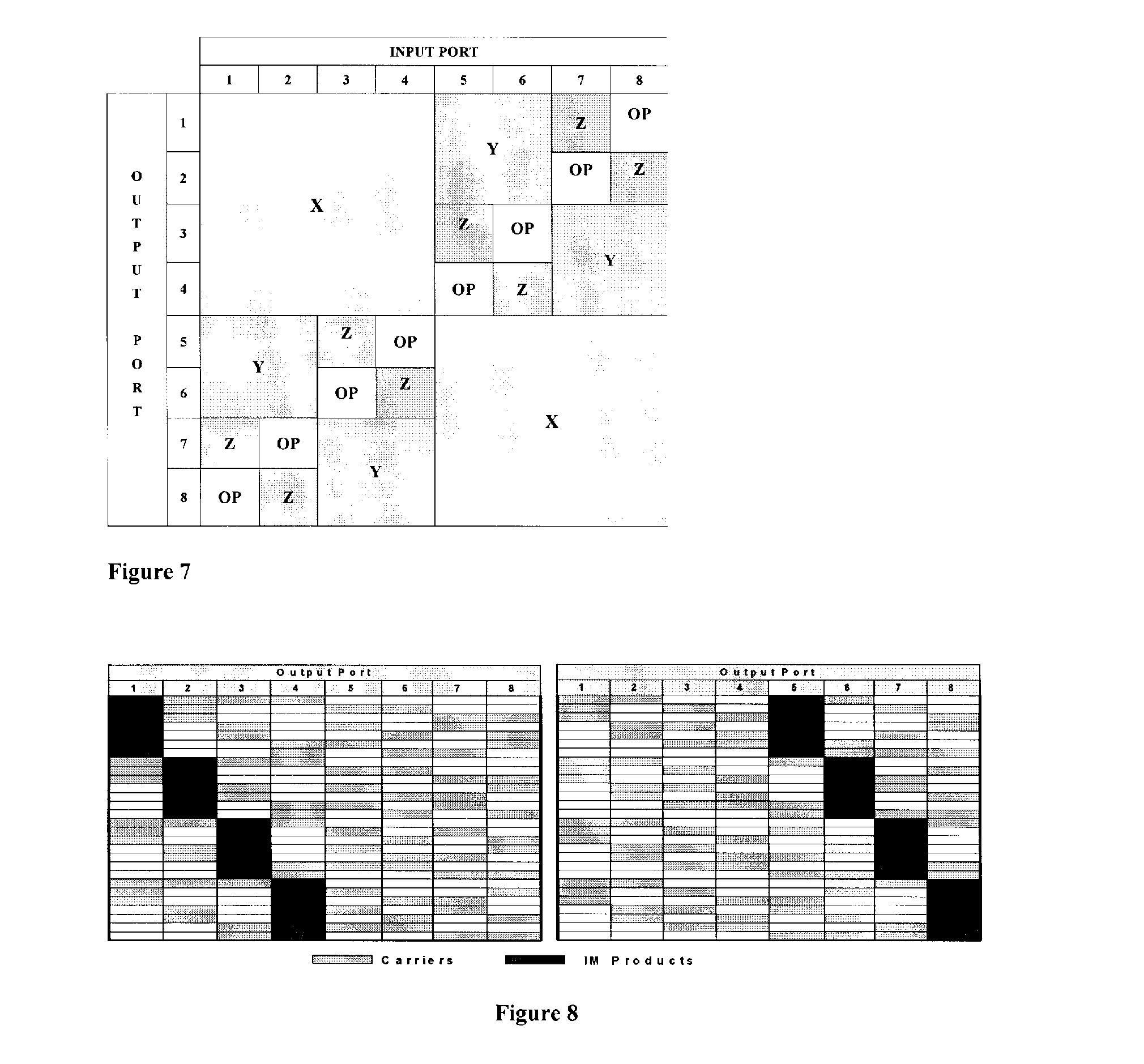Tuning multiport amplifiers
a multi-port amplifier and amplifier technology, applied in amplifiers, amplifiers with semiconductor devices/discharge tubes, amplifiers, etc., can solve the problems of high-challenging problems in ku and ka-band, lack of flexibility, power to beam allocation, interport isolation performance,
- Summary
- Abstract
- Description
- Claims
- Application Information
AI Technical Summary
Benefits of technology
Problems solved by technology
Method used
Image
Examples
Embodiment Construction
[0044]A diagram of an 8 port MPA is shown FIG. 1. It comprises a set of 3 columns of 4 input hybrids, a single column of 8 amplifiers and a set of 3 columns of 4 output hybrids.
[0045]A definition of a hybrid element (input or output hybrid), is given in FIG. 2. The input and output signals, p1 & p2 and q1 & q2 are assumed to be complex. Transfer function of the hybrid is represented thus:
(q1q2)=(C11C12C21C22)(p1p2)(1)
[0046]where C11, C12, C21, C22 are all invariable complex coefficients which can be represented as follows:
C11=r11·exp j·θ11, C12=j·r12·exp j·θ12, C21=j·r21·exp j·θ21, C22=r22·exp j·θ22 (2)
[0047]Ideally for a perfect hybrid all r=1 / √2, and all θ=0, and the transfer matrix becomes:
T=12(1jj1)(3)
[0048]For a practical hybrids, r and θ will deviate from the ideal, and if the deviations are small (√2 / r<0.2 dB, θ<10°) the following approximations can be made:
C11=(α / √2)(1+σ11+j·θ11), C12=j(α / √2)(1+σ12+j·θ12) (4)
C21=j(α / √2)(1+σ21+j·θ21), C22=(α / √2)(1+σ22+j·θ22) (5)
[0049]where...
PUM
 Login to View More
Login to View More Abstract
Description
Claims
Application Information
 Login to View More
Login to View More - R&D
- Intellectual Property
- Life Sciences
- Materials
- Tech Scout
- Unparalleled Data Quality
- Higher Quality Content
- 60% Fewer Hallucinations
Browse by: Latest US Patents, China's latest patents, Technical Efficacy Thesaurus, Application Domain, Technology Topic, Popular Technical Reports.
© 2025 PatSnap. All rights reserved.Legal|Privacy policy|Modern Slavery Act Transparency Statement|Sitemap|About US| Contact US: help@patsnap.com



